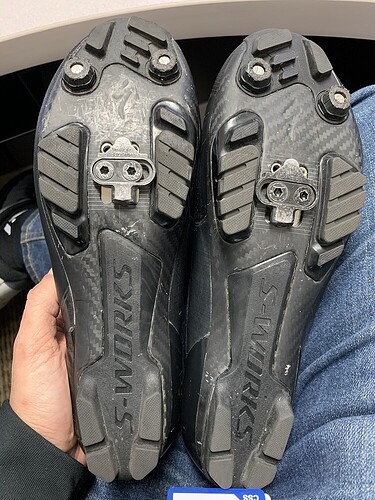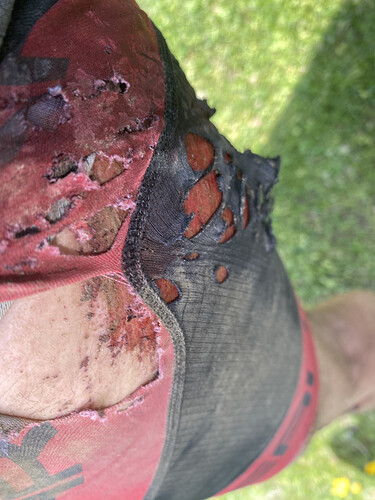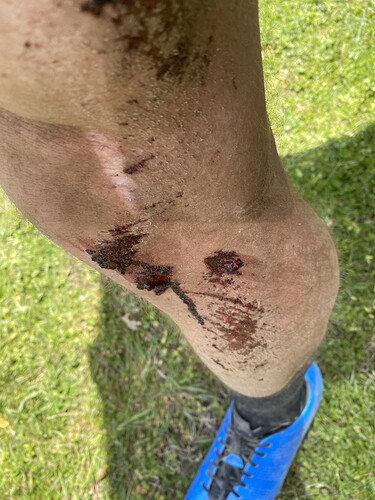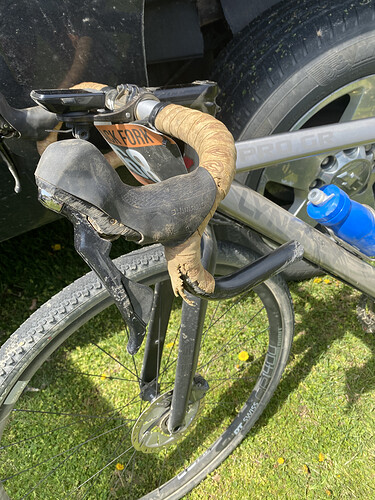I have a gravel race this weekend and use Assioma pedals as my power-meter. This race has several sections that are barely rideable and the chances of having to walk are high. I have Xpedo’s and can do the conversion, but I worry a little about rubbing the pod on the inside of each pedal. To protect against this, I have to shift the MTB cleats as far as possible to one side to provide clearance on the pod side. I’ve done this before and it does work.
However, I think it would be interesting to not see the power numbers during the race as I wonder if an awareness of how many watts I am pushing creates artificial barriers psychologically. On the other hand, even if this is the case I could simply run data screens that don’t include power data, but have it available for analysis after the race.
So what say you? Are there any pro’s to just racing with just SmO2 and HR? I tend to think not, but I’d be interested in hearing other’s thoughts.
No answers, but questions to drive your potential direction:
-
How have you used Power data in past events like this?
- Has it been a benefit or detriment in your eyes?
-
What are your goals for the event?
- Are you planning to be at the pointy end and racing for places at the top?
- Or are you aiming to just ride and complete it?
- If you are “racing” and aiming to follow lead groups, you may want (or even need) to ignore power and go with the flow of the action.
- If there is a reason you need to throttle and withhold your efforts, especially early when people tend to push harder, that can be useful.
Data like this may be informative and useful in reaching some goals, while it can also lead to unnecessary restriction and even underperformance. All that info is great for training, but even with the best training and race plan, sometimes we can fall short, meet or exceed those data points on the big day.
For me, I use power to train and track general progress. I capture it during events, but rarely use it in those same events. I am the type that panics and overreacts to stuff like HR and power that seems problematic, when I can actually hang. So I use a “race screen” that has minimal data. Speed, Distance, Ride Time, Kilojoules (mainly a reminder for eating and drinking during longer events), Clock Time are all I look at in event. Other than that, I ride by my own feel and desire, as well as going with groups when that’s my goal.
1 Like
Yeah - I really have always raced by feel. The real dilemma is whether or to what degree I will miss having the data after the fact, and how to balance that with the potential benefits of knowing I will never know, and being free to push / find limits in other ways.
Thanks for the reply!
Hello
I think having the data would be great to see how you do in the event, however I would be very nervous of a changed cleat position.
A change in cleat position at higher intensity could cause some injuries that may take a while to go away.
I have been using the rally pedals dual-sided now for a few months (most of the data I have shared with you is from those pedals.
The only small complaint is they don’t release quite as well as shimano, but it hasn’t really been an issue even in really technical terrain. In a gravel race it would be an issue at all.
no spikes (and I have used srm or power2max for about the last 5 years on all my bikes)
Not a direct answer I know, but I would suggest just racing with your same cleat position that you are used to.
1 Like
A good illustration (not my shoes) of what this looks like.
But what are you illustrating?
I don’t have a PM on my MTB, and I don’t often ride off road, let alone race. When I do, I’m certainly not at the pointy end, so it’s like a day off, to just go out and ride on feel.
The only data I would compare, is HR. I look to see how my HR was for sections easy and hard, usually longer than 5 minutes. If it’s a course I know well, or there is a GPX file available (to analyze before the ride/race) then I’ll target a HR range and try keep it steady, eg. like doing a threshold or VO2 interval.
At least with Intervals.icu, if you have lots of data with a PM and HRM, the load (hrTSS in TrainingPeaks) can be calculated based on the time in zone or average HR for each activity. I’ve tested it by disabling the PM on my Garmin 735XT and only using it on my Lezyne head unit when on the road bike to see how the TSS and hrTSS compare. It’s quite close 3-4% difference over a 3-4 hour rides. That way I am able to compare the same rides with and without a PM.
Not sure it helps you, but it’s how I approach my off road rides.
I guess how far the cleats are moved? I almost always ride with road cleats, so I would be switching it up regardless to get the walkability of MTB shoes.
Yeah, I won’t be at the pointy end, that’s for sure. But it would be nice to see how well/poor I performed compared to what software believes I’m capable of…
I wrecked! But I have the data 
I’m good. Lucky it wasn’t worst really. Wahoo says I was going 30 mph so it could have been way worse. Shower afterwards was the low point. Back on the bike already!
Thanks for the well-wishes!




